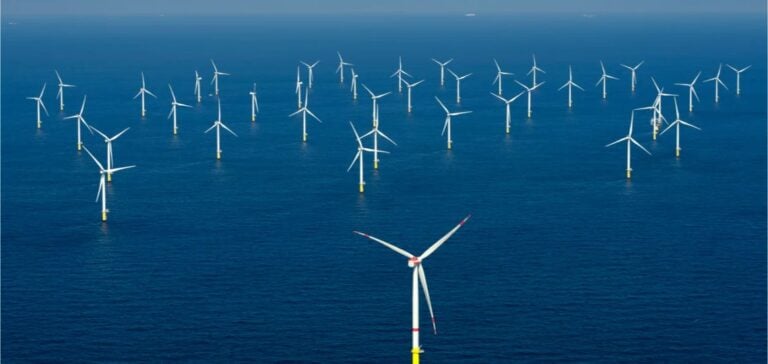The first lease sale for offshore wind projects in the Gulf of Maine, organized by the Biden-Harris administration, marks an important advancement toward the United States’ ambitious energy goals. This sale, conducted under the supervision of the Bureau of Ocean Energy Management (BOEM), grants rights to develop floating wind energy on the Atlantic coast, with projects capable of producing enough electricity to power more than 2.3 million homes.
The results of this sale, the sixth since President Biden took office, reveal two provisional winners among the participating companies: Avangrid Renewables, LLC and Invenergy NE Offshore Wind, LLC. These companies have secured leases covering large areas in the Gulf of Maine, more than 20 nautical miles off the coast of Massachusetts. Total bids exceeded $21.9 million, confirming the growing interest of investors in the U.S. offshore wind sector.
Strong Commitment to the Biden-Harris Administration’s Goals
Since the current administration began, the United States has set a target of deploying 30 gigawatts of offshore wind capacity by 2030, including 15 gigawatts dedicated to floating wind projects by 2035. The Gulf of Maine lease sale represents a crucial step toward these goals, aiming to reduce dependence on fossil fuels and strengthen the country’s energy independence.
The Department of the Interior, led by Secretary Deb Haaland, has approved 10 commercial-scale offshore wind projects to date, with a cumulative potential output of over 15 gigawatts. These projects are expected to power over 5 million American homes with renewable energy. Authorities also plan to organize further lease sales through 2028, thus consolidating a sustainable development strategy for the offshore wind sector.
Expected Benefits for the Local Economy
The lease sale includes specific conditions to promote local employment and stimulate national supply chains. The winning companies have committed to investing more than $2.7 million in workforce training and the development of the U.S. supply chain, as well as allocating equivalent funds for fishing compensation, aimed at mitigating potential impacts on the local fishing industry.
If approved, the new offshore wind infrastructure is expected to create jobs across various sectors, from factories to shipyards, thus strengthening the regional economy while contributing to decarbonization efforts. Federal authorities are also encouraging the signing of labor agreements to ensure fair conditions and stability during project construction phases.
A Multi-Stakeholder Collaboration for Sustainable Development
The implementation of these projects relies on close collaboration between BOEM, local communities, states, tribal groups, and various ocean users, including representatives from fisheries. Elizabeth Klein, Director of BOEM, emphasized that this approach of consultation is essential to ensuring development respects local interests and the environment.
Before approving any construction project, each company must submit a detailed project plan to BOEM, which will then be subject to an Environmental Impact Assessment (EIA). This assessment will include consultations with tribes, government agencies, and other stakeholders to assess potential effects on the marine environment and regional economic activities.
Investing in Technological Innovation
As part of the federal Floating Offshore Wind Shot initiative, the United States is investing in floating turbine technologies to harness energy resources located in deep waters. This technology promises to enhance the nation’s competitiveness in the renewable energy sector by addressing the challenges posed by the complex seabed topography along the East Coast.
The Gulf of Maine lease sale is part of this strategic approach, positioning the United States as a key player in offshore wind innovation, alongside other global leaders. The Biden-Harris administration continues to support this energy transition through incentive policies and subsidies to encourage private investment in clean energy.
The results of this first offshore wind lease sale in the Gulf of Maine are seen as a strong signal of the United States’ potential for innovation, laying the foundations for a greener and more resilient economy.






















